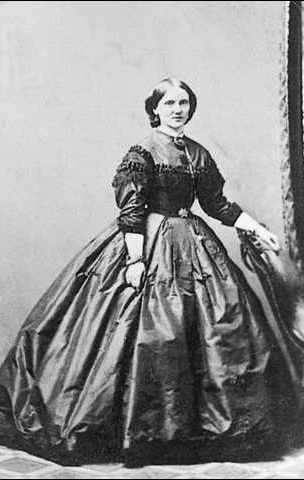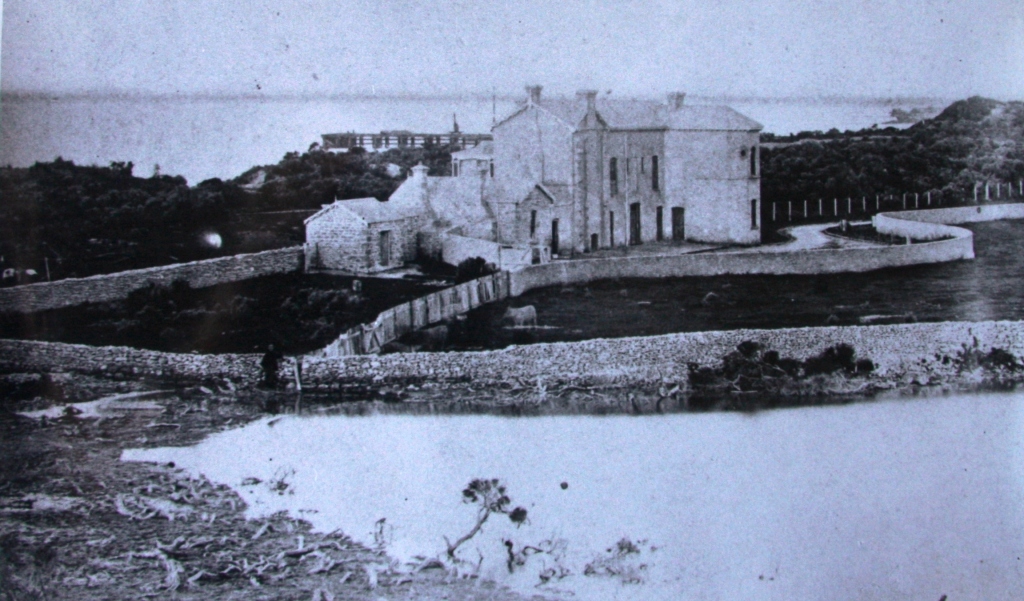Karatta House
Karatta House could be described as Robe's first holiday home. Standing on a narrow stretch of land between Lake Butler and Guichen Bay, the grand house was built by wealthy pastoralist Henry Jones so his English wife could escape the inland summer heat.
Henry and his brothers, Derwas and Heighway, established Binnum Binnum and Kybybolite stations north of Naracoorte, and held extensive runs just over the Victorian border. Initially, the Jones boys struggled to make a living, but their fortunes changed in 1851 with the discovery of gold in central Victoria. Over the next few years the price of sheep and cattle skyrocketed with the demand for meat on the goldfields, and they capitalised.
With the stations prospering, Henry returned to England and married a 'small lively woman, with a determined nature', called Frances Eliza Caton. Almost 20 years younger than her husband, she was immortalised when Governor Sir James Fergusson named the new settlement of Frances, between Bordertown and Naracoorte.

Image: Frances Eliza Caton Jones c 1856
Courtesy: State Library of SA
The high-profile newlyweds were greeted at Guichen Bay in April 1857 with a salute from the guns on Flagstaff Hill. After resting a few days, they set off on the 150-kilometre journey via rough bush tracks to Binnum, riding in a four-in-hand vehicle Henry brought with them from England. Known as ‘Flash Harry’, he was a noted whip, fond of showing off his driving skills. Once he apparently sought bets that he could manoeuvre his team around Robe’s famous obelisk.
In 1862, Henry called tenders to build Karatta on a large parcel of land purchased nine years earlier for £40. The two-storey house was based on plans drawn up by colonial architect Edward Angus Hamilton, whose legacies include Adelaide's Treasury buildings and Old Government House at Belair.
Even though Jones ran out of money before the full design could be completed, the initial result was considered a 'magnificent marine retreat'. The Jones family made the most of it, entertaining Robe society and the local squattocracy in grand style. A bad drought, government moves to resume pastoral leases for closer settlement and his declining fortune resulted in Henry selling Binnum in 1874 and returning to England.
Meanwhile, Karatta was leased in the late 1860s and became a boarding house run by Mrs Thompson, a widow from Penola who established the business to provide for her two young boys. Lodgers included the region’s stipendiary magistrate and future government resident of the Northern Territory, George Byng Scott. Ironically, he rented a suite of rooms with his second wife, Caroline, who came to the area as governess to the Jones children.
Vice-regal days
In December 1870, Karatta acquired a summer resident of such grandeur that Robe still basks in the reflected glory. Governor Sir James Fergusson leased Karatta as a temporary summer residence for three successive seasons. A team of painters and decorators were engaged to make the house ready, and more extensive renovations were carried out in 1871 when a separate servants' hall and kitchen was added.
Sadly, the governor’s much-loved wife did not have the chance to enjoy them. Lady Edith died in October 1871 at the age of 32, having been seriously ill since giving birth in April. Sir James returned to Robe for one more summer, but in December 1872 he left the colony to become governor of New Zealand. His children apparently made use of the house until at least April 1873, when newspapers carried reports of his son being rescued from drowning. One of Sir James’s daughters, Mrs Baird, came back to Robe almost 70 years later to visit a place she described as ‘next door to Heaven’. Attending a morning tea organised by the Country Women’s Association, she reflected on some of the happiest days of her life, spent in ‘one of the most refreshing, lovable little townships in the world’.
Over the next few decades Karatta was associated with some of South Australia’s best known pastoralists. The next resident is thought to have been Robert Stockdale, who owned Lake Eliza station near Robe and took up land on Kangaroo Island that he named after Karatta. By 1900 it was being leased to Henry Dutton from the famous Anlaby station near Kapunda, home of South Australia’s oldest Merino stud. Sparing ‘neither money nor energy’, he undertook yet more renovations to make it ‘as good as new again’. He brought to Robe his sleek yacht, the Mavis, built of mahogany and oak, and was often seen driving about town in a coach, with liveried coachman and footman. Then in 1907, the house was leased by Kalangadoo grazier George Riddoch, who entertained Governor Sir George Le Hunte over breakfast during a quick summer visit.
Twenty years later John and Florrie Tonkin bought Karatta. They ran a guesthouse, while raising eleven children, altering the building internally to create additional bedrooms and a large guests’ dining room that hosted countless community events and private functions.
(This is an edited extract from Almost an Island: the Story of Robe, by Liz Harfull, published by Wakefield Press, 2013.)

Image: Karatta House - before last wing built c 1869
Courtesy: Robe Local History Collection
